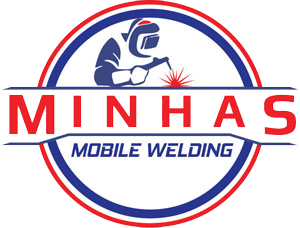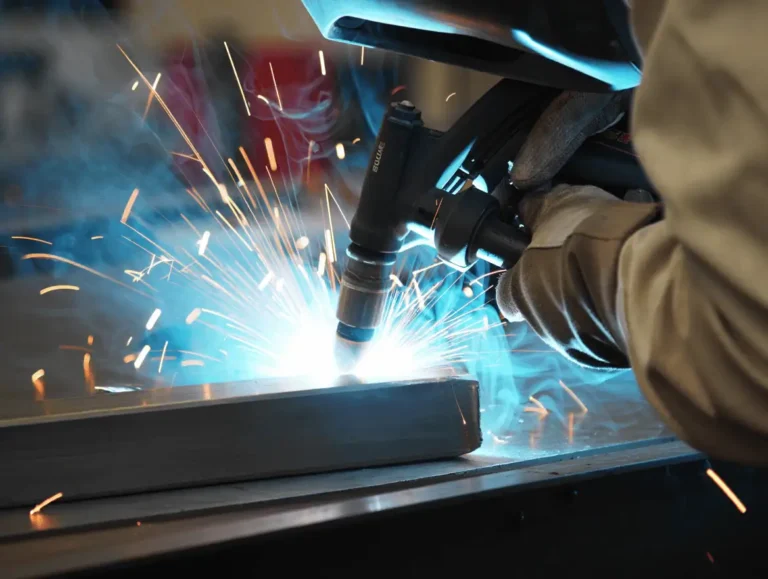When working with corrugated metal sheets, one question often sparks debate among builders and homeowners alike, do you actually need to weld them? Whether you’re building a shed in Alberta, roofing a cottage in Toronto, Ontario, or putting up siding in British Columbia, the method you choose impacts cost, strength, and long-term durability.
Let’s explore when welding makes sense, when it doesn’t, and how Canadian weather, building codes, and materials influence your choice.
What are Corrugated Metal Sheets and Their Uses
Corrugated metal sheets are thin, wavy-patterned steel or aluminum panels known for their strength, flexibility, and corrosion resistance. The rippled design increases rigidity while keeping weight low, perfect for roofing, siding, fencing, and even modern interior designs.
In Canada, corrugated steel is especially popular for:
- Residential roofing and siding – handles snow, wind, and temperature swings.
- Agricultural buildings – barns, storage sheds, and stables.
- Commercial and industrial structures – warehouses, workshops, and factories.
Because Canada experiences extreme weather conditions, from icy winters to coastal salt air,. choosing the right material and installation method is key to preventing leaks, rust, or premature wear.
Welding vs. Non-Welding Installation Methods
What Welding Means in This Context
Welding fuses metal sheets together by heating them until they melt and bond. Common methods for corrugated steel include MIG (Metal Inert Gas) and arc welding. Welds create strong, permanent joints ideal for structural or load-bearing applications, such as steel frames or industrial supports.
However, welding corrugated sheets is tricky. The thin gauge (usually 26-gauge to 29-gauge) means they can easily warp, burn through, or distort under heat if not done precisely. It also requires skill, special equipment, and safety precautions.
Alternative Fastening Methods
For most Canadian construction projects, welding isn’t necessary. Instead, contractors use:
- Self-drilling screws with rubber washers (most common).
- Rivets for tight seams or decorative finishes.
- Clips and brackets for metal-to-frame installations.
- Sealants or adhesives in weatherproofing and lightweight applications.
These methods are faster, safer, and easily reversible, allowing for maintenance or panel replacement without cutting or re-welding.
Cost, Time, and Labour Comparison
Method |
Skill Level |
Labour Time |
Cost |
Best For |
|---|---|---|---|---|
| Welding | Advanced | High | $$$ | Structural frames, thick panels |
| Screws / Fasteners | Beginner–Intermediate | Low | $ | Roofing, siding, walls |
| Rivets | Intermediate | Medium | $$ | Decorative, detailed joints |
| Adhesives / Sealants | Beginner | Low | $ | Temporary or interior installs |
In short: for most Canadian homeowners, welding isn’t worth the extra time or expense.
Do You Need to Weld Corrugated Metal Sheets?
The short answer: rarely.
Welding corrugated metal sheets is typically reserved for heavy-duty industrial or structural applications. For roofing, siding, or fencing, you’ll almost always use fasteners instead.
When Welding Makes Sense
- Building structural frameworks or supports.
- Repairing thick steel panels or joining to beams.
- Working on custom fabrication (like welded art or industrial decor).
When You Don’t Need Welding
- Installing roofing panels (standard for homes across Canada).
- Building sheds, barns, or garages using pre-drilled sheets.
- Projects involving galvanized or pre-painted panels (heat damages the finish).
Canadian building codes don’t require welding for metal roofing or siding. Instead, they emphasize secure fasteners, correct overlaps, and proper sealing to withstand snow loads and moisture.
Practical Insights for Canadian Installers and Homeowners
- Choose the right gauge – For roofing, 26-gauge corrugated steel is ideal; it’s durable enough to handle snow yet light for easy installation.
- Pick weather-resistant coatings – Galvanized or galvalume coatings help prevent rust in humid or coastal regions.
- Mind the overlap – Panels should overlap at least one ridge horizontally and six inches vertically.
- Fasten correctly – Always drive screws through the flat section of the panel, not the ridge, to prevent leaks.
- Avoid welding galvanized steel – It releases toxic fumes; always work in ventilated spaces if welding is absolutely required.
- Inspect yearly – Check screws, washers, and sealant lines after each winter to prevent rust or loose panels.
Pro Tip: For quick, professional results, most Canadian contractors use self-sealing screws and avoid welding altogether. It’s faster, cleaner, and safer, especially in cold weather.
Where to Buy Corrugated Metal Sheets in Canada?
If you’re wondering where to buy corrugated metal sheets in Canada, you’ve got plenty of reliable options. Many suppliers offer custom cuts, color finishes, and nationwide delivery.
Listed below are some reputable Canadian suppliers of corrugated metal sheets worth checking out, each delivers across various regions and offers profiles suitable for roofing, siding, and more: You can also find corrugated metal sheets suppliers near me in your areas.
Supplier |
Location / Region |
Why They Stand Out |
|---|---|---|
| Fouillard Steel Supplies Ltd. (Manitoba) | St. Lazare, MB | Family-run since 1982, large in-stock inventory of corrugated metal roofing & siding across Canada. (Fouillard Steel Supplies) |
| Westman Steel | Western Canada & Eastern branches | Offers 7/8″ corrugated galvanized panels in multiple gauges (22–28) for roofing and siding. (Westman Steel) |
| Phoenix Metals Ltd. | Alberta & Western Canada | Specialises in corrugated roofing & siding sheets, with a broad colour/finish range and custom options. (Phoenix Metals) |
| Metal Experts | Alberta, BC, SK, MB | Manufacturer & supplier across Canada, offering corrugated panels in 24–28 gauge with high-quality coatings. (Metal Experts) |
| Premier Metals | Atlantic Canada | Produces 7/8″ corrugated panels (26 gauge) with Canada-wide shipping from Nova Scotia. (Premier Metals) |
| Pillars Metal | Western Canada & national shipping | Provides corrugated metal siding/roofing with custom sizing, expert support, and fast shipping. (Pillars) |
| Dura Shelter Buildings | Ontario, Quebec & Eastern Canada | Offers corrugated steel panels for siding/roofing, emphasising durability and cost-effectiveness. (Dura Shelter Buildings) |
| Ontario Metal Roofing Sales | Ontario | Local manufacturer & supplier of metal roofing and siding including corrugated profiles, no minimums. (Ontario Metal Roofing Sales) |
| CanaArch Building Solutions | Ontario & nationwide | Specialist in corrugated metal wall panels and roofing panels designed for Canadian climate. (CanaArch Solutions) |
| Five Star Metals | Atlantic Canada & shipping nationally | Factory-direct metal roofing panel supplier; includes corrugated (ribbed) profiles. (Five Star Metals) |
When buying, always compare panel gauge, finish type (galvanized, painted, weathering steel), and shipping availability, especially if you’re in remote areas.
Cost & ROI Considerations
Here’s what to expect when budgeting your project in Canada: (rough estimates)
- Corrugated steel sheets: CAD $5 – $10 per sq ft (depending on gauge and finish)
- Installation with fasteners: CAD $2 – $5 per sq ft
- Welding labour (if used): CAD $70 – $120 per hour
While welding may seem stronger, the return on investment is usually higher with non-welded installations. Corrugated panels fastened correctly can last 40–60 years, withstand harsh Canadian winters, and require minimal maintenance.
Expert Opinions & Real-World Example
According to Forma Steel, a leading Canadian metal manufacturer, “Corrugated panels are designed for easy installation using exposed fasteners, making welding unnecessary for most architectural or agricultural uses.”
In Alberta, one commercial farmer replaced old wood siding with corrugated galvanized panels using only screws and sealant. After six years, the structure remains watertight with no corrosion, proving that proper fastening beats welding for long-term reliability.



